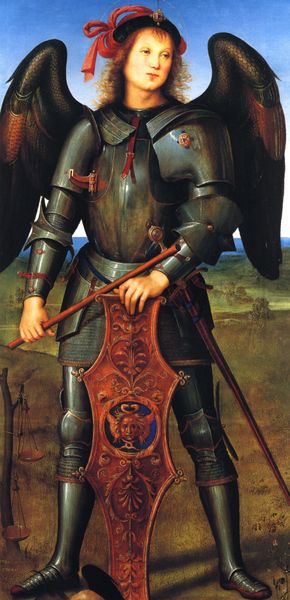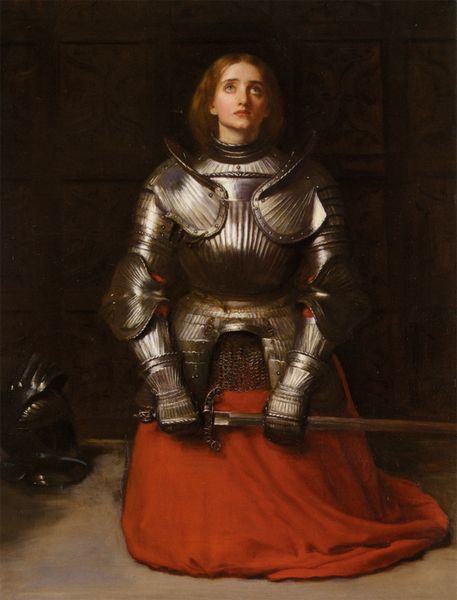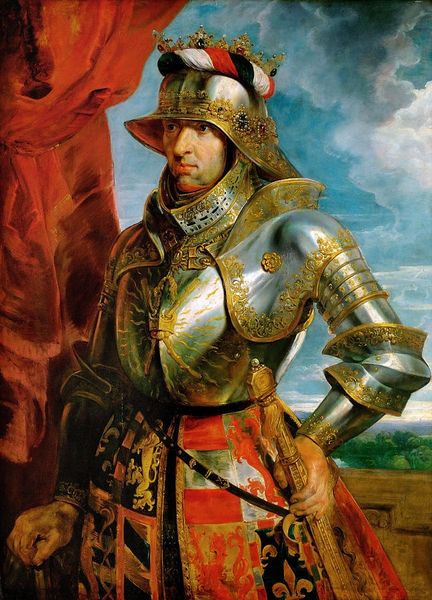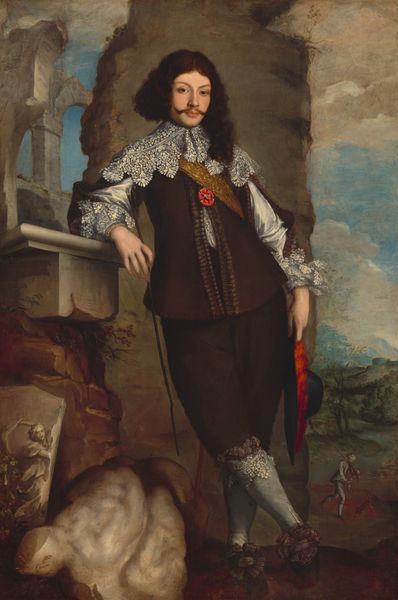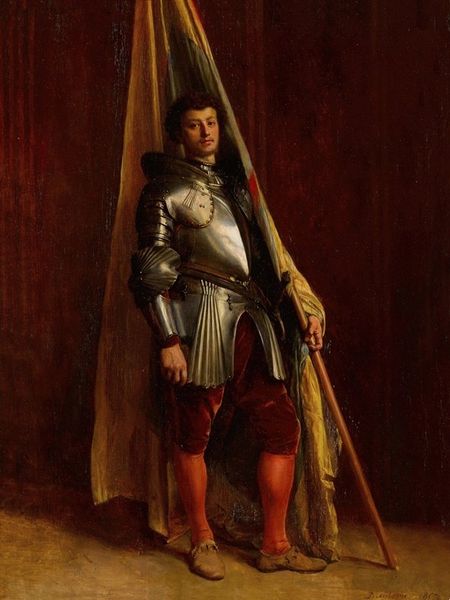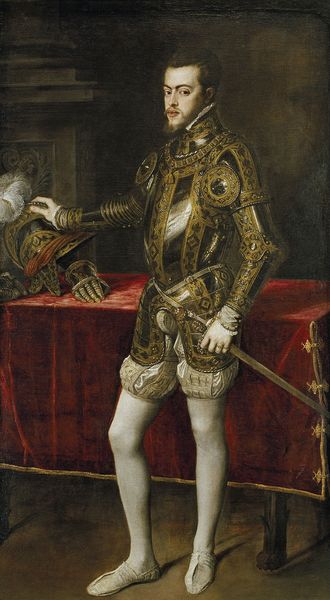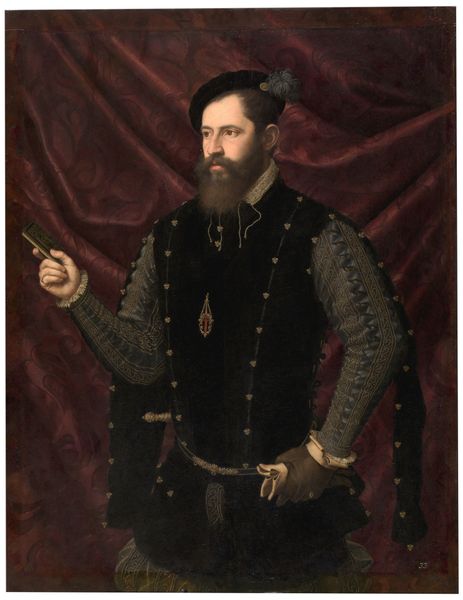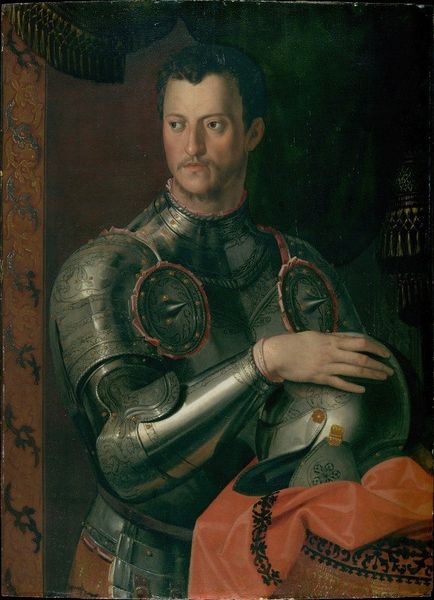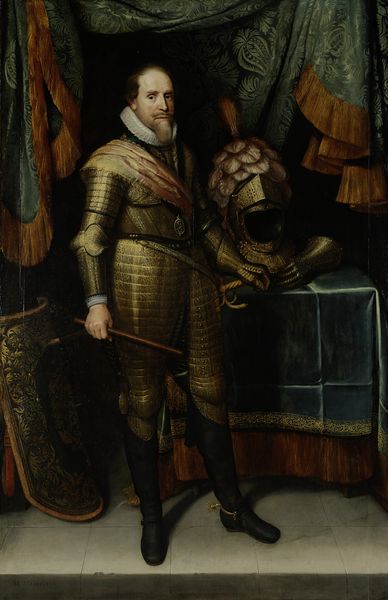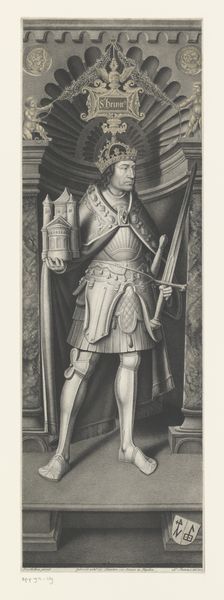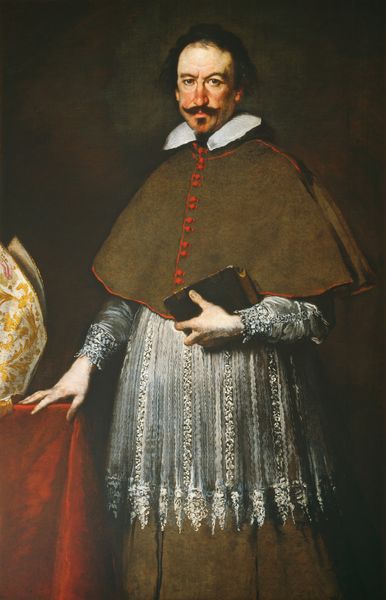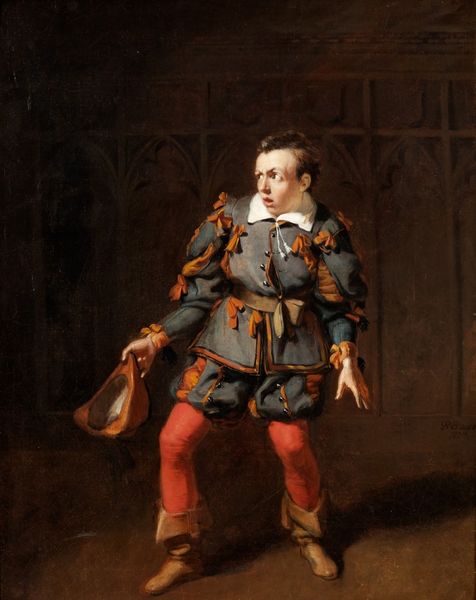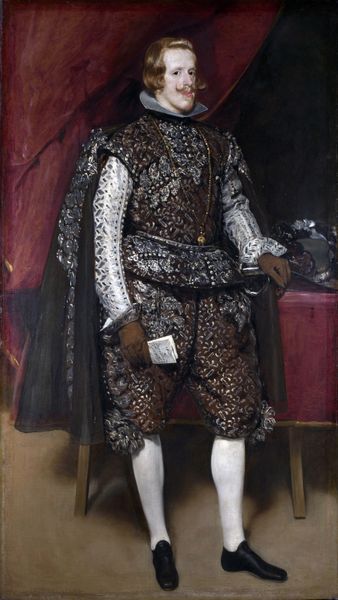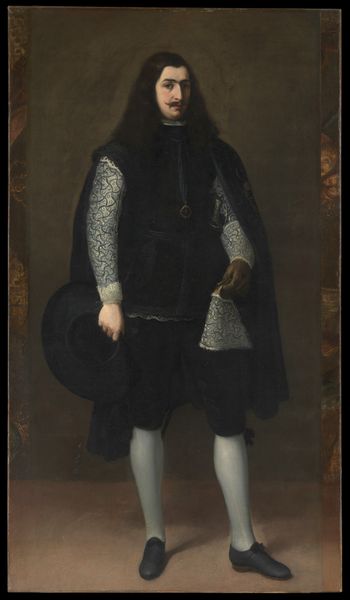
oil-paint
#
portrait
#
oil-paint
#
mannerism
#
figuration
#
history-painting
Dimensions: 53 5/8 x 41 3/8 in. (136.21 x 105.09 cm) (panel)
Copyright: Public Domain
Carlo Portelli painted this portrait of Giovanni de’ Medici on panel, capturing the sitter in full armor. The cool steel contrasts with the warm flesh tones of the face and the sensual female nude in the background. The armor speaks of Giovanni’s role as a military leader, but it also echoes the classical heroes of antiquity. The image of the warrior has been a potent symbol across millennia, from the bronze figures of ancient Greece to the Renaissance knights. Consider the sword, a symbol of power and justice. It appears in countless forms, from the Excalibur of Arthurian legend to the swords wielded by figures of authority in medieval tapestries. Each time, the sword carries the weight of its history, resonating with subconscious associations of strength, protection, and the potential for violence. We see here a cyclical return to archetypes deeply embedded in our collective memory, revealing how symbols evolve and endure across time.
Comments
minneapolisinstituteofart almost 2 years ago
⋮
Giovanni dalle Bande Nere (1498–1526), a celebrated condottiere of the papal mercenary forces, fought the invasion of the Italian peninsula by the Holy Roman Emperor Charles V. Giovanni died the year before Charles’s troops sacked Rome, in a battle outside Mantua. His remains were recently exhumed as part of an archaeological survey of the Medici family tombs. The study described the 28-year-old as “a vigorous man, with an athletic body, medium-sized skull, narrow nose…great physical strength and robusticity.” The muscles in his shoulders, legs, and feet confirmed he “was a highly skilled horseman,” while the wear and tear in his hips and back indicated he “had carried heavy loads since adolescence due to horse-riding and body armor.” Among many injuries, Giovanni’s right leg was amputated below the knee, likely the result of a cannonball hit. Gangrene followed, which killed the soldier after an agonizing three days. No lifetime portraits of the sitter are known, but he was painted many times posthumously to celebrate the Medici dynasty. Portelli’s portrait might have been made for the wedding of Francesco de’ Medici, Grand Duke of Tuscany, and Joanna of Austria, daughter of the Holy Roman Emperor Ferdinand I. The Italian wars of the 1520s, which had killed Giovanni when the Medici and Habsburg families were enemies, were allied through this 1565 marriage. The male and female herms in the background of the portrait, depicted with arms entwined and ivy climbing up the female figure’s body, may symbolize marital fidelity.
Join the conversation
Join millions of artists and users on Artera today and experience the ultimate creative platform.
